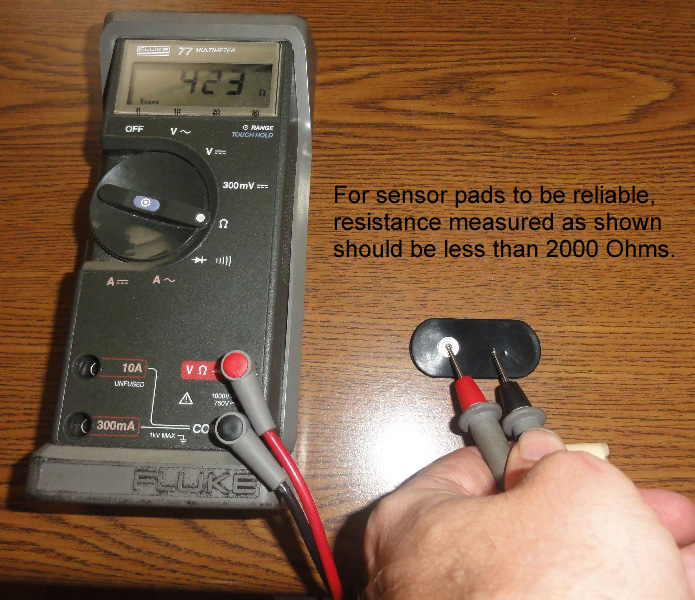If your SleepGuard biofeedback headband is misbehaving, this web page is here to help you figure out whether the problem is something simple that can be fixed without sending the unit in, or whether it's something that will require sending the unit in for service.
Please follow the steps below:
- Remove the electronic module from the headband and remove the batteries as shown in the "Replacing Batteries" section on page 12 of the manual, then re-insert the batteries as shown.
- Put the battery cover back on as shown on page 12 of the manual.
- Make sure you tucked the two metal tabs (on the opposite end of the battery cover from the screw) into their slots in the plastic housing before tightening the screw. If you didn't do that, remove the cover and re-install with the tabs tucked in.
- Press the Mode button and watch the display. The unit should give a brief double-beep, and all segments of the display should turn on at once momentarily. The display should then briefly display 0, and then change to 1 as the biofeedback tone comes on. The biofeedback tone should then sound continuously for several seconds, and then begin pulsing.
If the unit does not turn on, or the display shows "Bat", then the batteries need to be replaced, and the steps above should be done again. If the unit does not do everything described in step 4 above with new batteries, it needs to be sent in for service.
If everything works as it should in step 4, continue with the steps below. - If the unit is on, hold the Mode button down for one full second to turn the unit off.
- Briefly depress the mode button to turn the unit on, and while the tone is sounding, bend the rubber snap arms around behind the unit and touch both snaps to the stainless steel back at the same time, as shown in the photo below:

The sound should stop when the two snaps are both touching the metal back at once. If the sound does not stop, then the unit needs to be sent in for service.
If the sound does stop in step 6 above, and the problem you had with your unit was that it was beeping when you think it should not beep, the sensor pads may need to be cleaned or replaced. - To clean the sensor pads, either wipe with alcohol using a cotton ball or paper towel, or with your fingertips, wash the surface of the sensor pads with soap & water and then rinse.
- If you or a friend has a digital multimeter, you can check the resistance of the sensor pads as shown in the photo below:

If you or a friend do not have a digital multimeter, you can go to Radio Shack and use one there. If the resistance is above 2000 Ohms, the carbon matrix in the rubber sensor pads has degraded, and the sensor pads need to be replaced. Replacement sensor pads may be ordered by clicking here.
